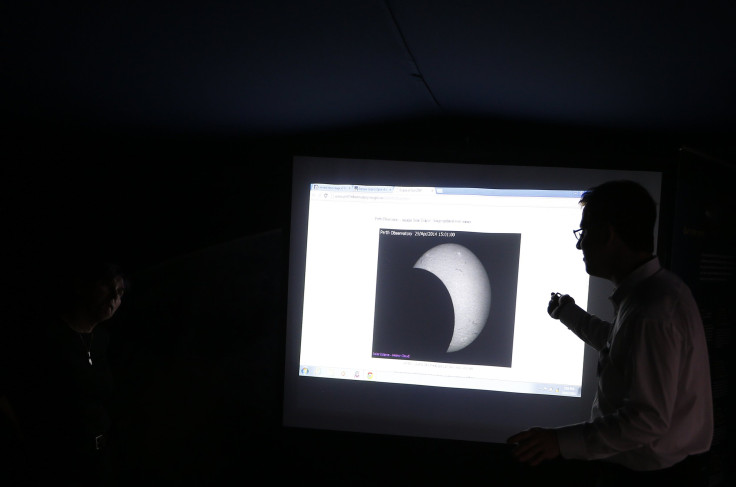First Solar Eclipse Of 2014 Is For The ‘Penguins,’ Australia Gets A Tiny Glimpse Of The ‘Ring Of Fire’ [VIDEO]

Update 12:00 p.m. EDT: The European Space Agency's Proba-2 satellite observed the solar eclipse from orbit. The video of the solar eclipse from the satellite's perspective can be viewed below.
The first solar eclipse of 2014 occurred early Tuesday morning. If you missed it, don’t worry -- you are not alone. The annular solar eclipse was visible in Australia, but the best place to catch it was on a tiny patch of uninhabited land in Antarctica.
An annular eclipse occurs when the moon is exactly in line with the sun but the moon appears smaller than the sun, which makes the sun appear as a ring, or annulus, around the moon. This causes the “ring of fire” visual effect for Earth-bound viewers that appears to surround the moon. The solar eclipse, viewed as a partial solar eclipse, began in Australia around 1 p.m. local time, reaching its peak at 2:42 p.m. local time, the Sydney Morning Herald reported.
Cloudy skies obscured the beginning of the solar eclipse, but the clouds soon disappeared and many observers were able to see the partial solar eclipse. Observers in Sydney were not quite as lucky, as cloudy weather disrupted the viewing experience for many residents, according to the Herald. However, Perth Observatory was able to capture several images of the solar eclipse, despite the clouds.
While 2014 may be a good year for observing lunar eclipses, those hoping to see a solar eclipse may be disappointed. A partial solar eclipse will occur on Oct. 23 and will be visible in western North America, Universe Today reported. The second total lunar eclipse will occur in October, and the second “blood moon” of 2014 will occur on Oct. 8.
Slooh, an international group of astronomers and observatories, provided a live stream of Tuesday’s solar eclipse.
“This is a thoroughly bizarre eclipse," Slooh astronomer Bob Berman said in a statement. "When Slooh brings its live feeds from Australia, and we watch in real time as the inky black hemisphere of the Moon partially obscures the Sun, the greatest thrill might be an awareness of what's occurring -- unseen by any human -- in a tiny region of Antarctica.” Slooh nicknamed the eclipse the "Penguin” annular solar eclipse in honor of the flightless birds because they were the animal species that was in the best position on Earth to view the event.
The video of the annular solar eclipse, courtesy of Slooh, can be viewed below.
Solar Eclipse as viewed by ESA's Proba-2 satellite:
© Copyright IBTimes 2024. All rights reserved.












